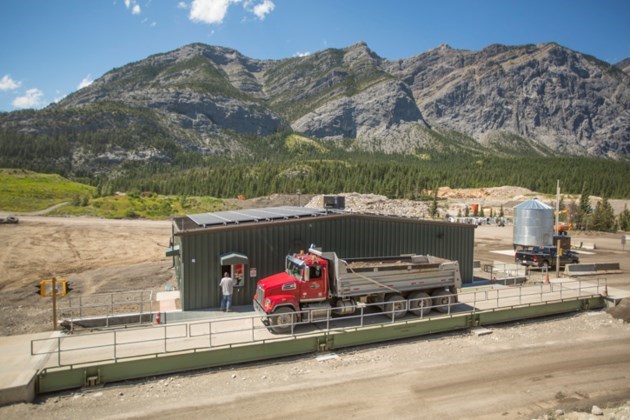BOW VALLEY – The financial statements for the Bow Valley Waste Management Commission show a healthy organization.
The commission’s board of directors – comprised of representation from the Towns of Banff and Canmore and the MD of Bighorn – approved the audited statements at its April meeting.
“It’s a strong financial position,” Bill Enns, the principal chartered accountant for Momentum Business Designs, told the board.
Though a picture of fiscal health, board members agreed to fine-tune aspects of the statements to help make them a bit clearer for possible new members following the 2021 municipal elections.
Peter Poole, a councillor from Banff, first raised the issue when asking for clarity on the investments held by the commission.
“I scratch my head and if our auditors might have ways to make it more clear to people in the public if not this year in future years," Poole said.
Fellow board member and MD of Bighorn Reeve Dene Cooper highlighted the importance of ensuring the financials are as clear as possible, especially if new members join the commission.
“This becomes very important this year with an election and next year might have board members come in brand new," he said. "While I expect my financial officer to read through this rather easily, I’m trying to make the business of the organization understandable to a new councillor coming into the commission for the first time.”
The commission finished 2020 with $7.45 million in financial assets – an increase of about $1 million since 2019 – including investments of $6.1 million.
Its liabilities were $2.54 million, which includes $1.38 million for the eventual closure and long-term debt of $665,875. Enns said the long-term debt is declining by about $95,000 each year, while the money held for an eventual closure gradually increases.
The debt comes from buying the site from the MD of Bighorn for $2.23 million, with roughly $190,000 left to pay off as of 2025.
The net assets – the combination of financial assets plus non-financial assets subtracting the liabilities – were $14.56 million for a growth of about $500,000 since 2019. However, $9.6 million of those were in tangible capital assets such as buildings and machinery.
“These are fixed in place and not much you can play with,” Enns said of the tangible capital assets, saying it’s “not easily turned into cash.”
With the site located in the MD of Bighorn, the municipality received $73,000 in hosting fees from the commission and a further $23,000 in levy fees. The commission received $123,875 in member fees from the three participating municipalities last year.
Last year saw the landfill collect $2.62 million in tipping fees – slightly down by $300,000 compared to 2019 – and a further $615,941 for rock waste disposal. It received $3.6 million in revenue after budgeting for $3.06 million.
The commission finished with expenses of $3.1 million, which was about $500,000 higher than in 2019, but ended with a net operating revenue of $509,000.
Vi Sandford, a Canmore councillor and vice chair of the commission, noted the “healthy cash balance” by year end.
Established as a non-profit organization in 1998, the commission is responsible for managing construction, renovation and demolition waste in the Bow Valley. The Francis Cooke landfill and resource recovery centre has received accreditation from the Compost Council of Canada and was named the top Albertan construction waste management organization in 2019. It has more than 40 years of life remaining as ongoing work is being done to expand the facility.
It operates as a Class III landfill, accepting dry, non-hazardous material and collects the majority of that kind of waste in the valley.
Cooper said with the landfill up and running for as long as it has been, the financials are “more predictable or less volatile,” with start-up costs taken care of and closing costs slowly accumulating.
“When you’re starting everything, it’s all moving forward and may not be as planned as reality sets in," he said. "If there’s ever a stage where someone can come in and get a grasp on it quickly without having to deal immediately with large issues that’s in this middle phase of the landfill.”



